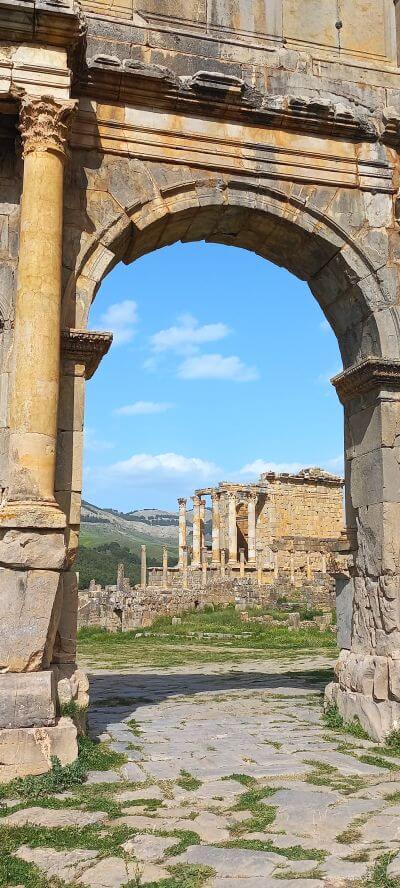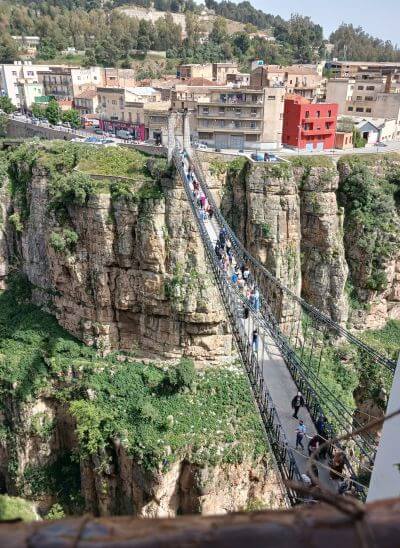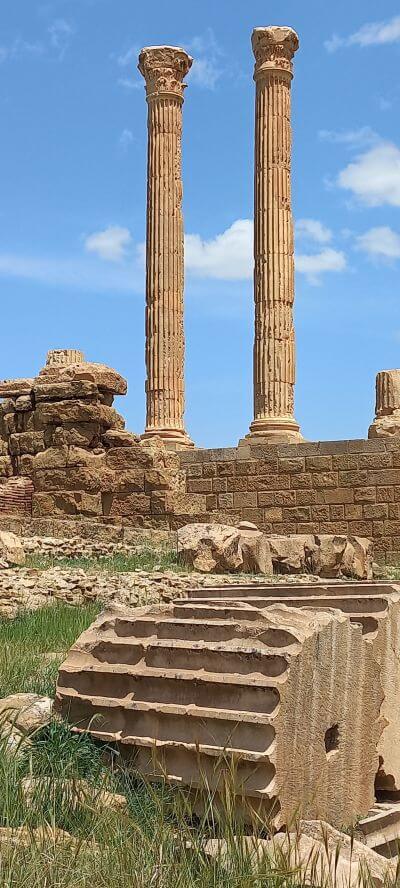
We had three great days to visit two UNESCO world heritage sites (Djemila and Timgad), and Constantine (the “City of Bridges”). Constantine was also a major crossroads of the Roman empire, known as Colonia Constantiniana.
Three fantastic sights in three days meant that we had a LOT of photos to go through, so we decided to do something different for this post. We have the usual collection of a dozen or so images that summarizes the entire three days. But for anyone interested in the sights in depth, clicking any of the three images below will open a Flickr album with even more of our best pictures of that day. Enjoy a trip to eastern Algeria with us vicariously!

Djemila
CLICK HERE or on the image for our Djemila album.
We left Algiers for Djemila by car and enjoyed a very scenic drive through mountains and fertile fields. The highway was lined with stork nests and with “garrettes” (small watch towers) from the 1990s civil war every 10 km. We picked up our tour guide for the three days at the side of the highway at the turn-off for the site and were soon enough in the old Roman city. UNESCO selected Djemila for its list because it is a Roman city uniquely laid out down a mountainside and goes on to say “It is one of the world’s most beautiful Roman ruins.”; it really is! A beautiful collection of temples, churches, triumphal arches, baths and theatres. And, of course, the more basic market, forum, and public latrines. Djemila also had a nice museum of mosaics and sculptures found on site, although we visited it first so saw things without knowing exactly where they came from in the extensive site.
After our visit, we carried on towards Constantine, and checked into our hotel, recently renamed the “Panoramic Hotel”, and we did have a splendid view of two of Constantine’s famous bridges from our room.

Constantine
CLICK HERE or on the image for our Constantine album.
The following morning, we began a full day exploration of the city of bridges. Much of the day was on foot, but because the canyon of the Rhumel River is up to 170 metres deep we had to do some of our tour by car too. After a brief stop at the first of many viewpoints, we walked down a street of metalworkers, mostly copper smiths. The skilled artisans there were producing everything from tea service sets to decorations for the tops of mosques. However, their stock in trade seemed o be huge, round platters, some nearly 2 metres in diameter. From the artisan district we went into the heart of Constantine with a stop in the Emir Abdelkader Mosque and a walk though districts ranging from French colonial to local markets. Finding our car and driver again, we descended into the canyon to look up at old tourist walkways clinging to the sides, and then back up to see even more bridges and a war memorial, ending at the pedestrian bridge, Mellah Slimane Bridge, before heading back to the hotel. We actually returned to the pedestrian bridge for dinner, at a restaurant right on the edge of the canyon 110 metres below. We weren’t brave enough to sit at one of the high tables on the narrow balcony though!

Timgad
CLICK HERE or on the image for our Timgad album.
On our final full day in Algeria, we hopped in the car and drove out to the UNESCO site of Timgad. Timgad was clearly a Roman town laid out in a classic grid pattern. While the setting couldn’t compete with the seaside location of Tipasa, nor the mountainside of Djemila, some of the individual structures such as the triumphal Arch of Trajan and the Temple of Jupiter were truly impressive.
On our return to Constantine we passed a large salt lake with dried salt being harvested from its shore and bags of salt stacked up for sale along the road.
See the short photo album for all 3 days directly on Flickr: https://www.flickr.com/photos/100countries/albums/72177720326153843










